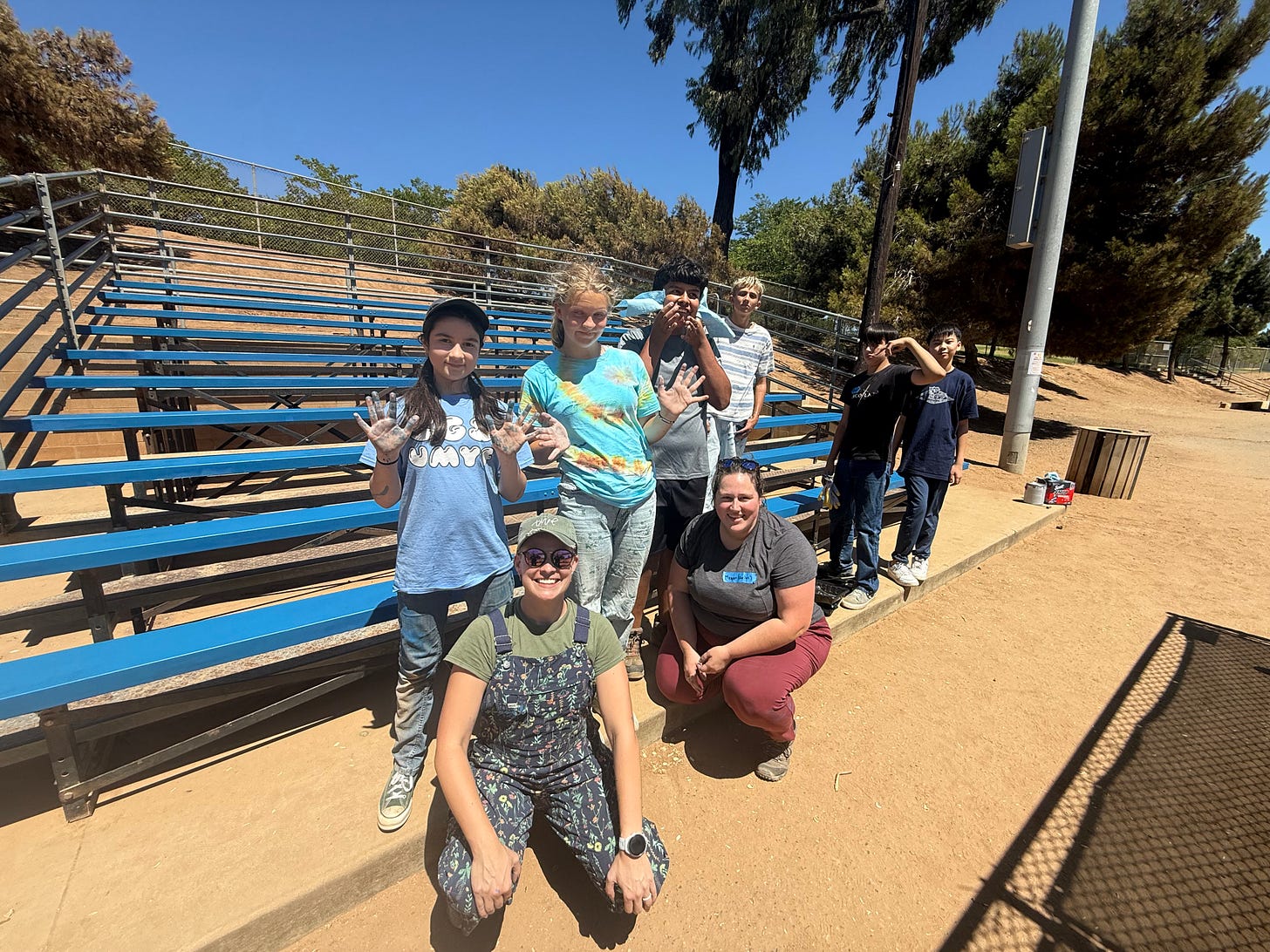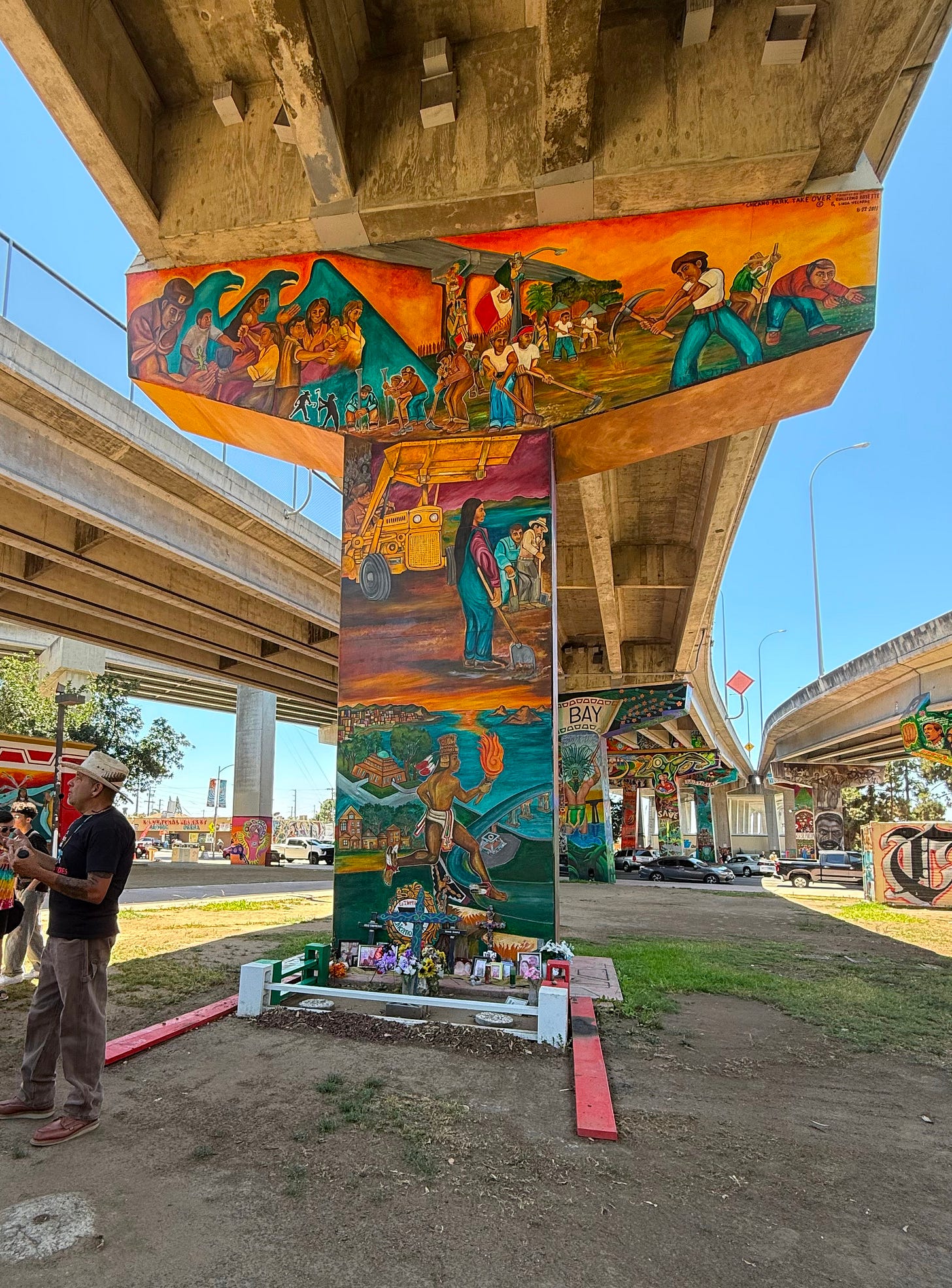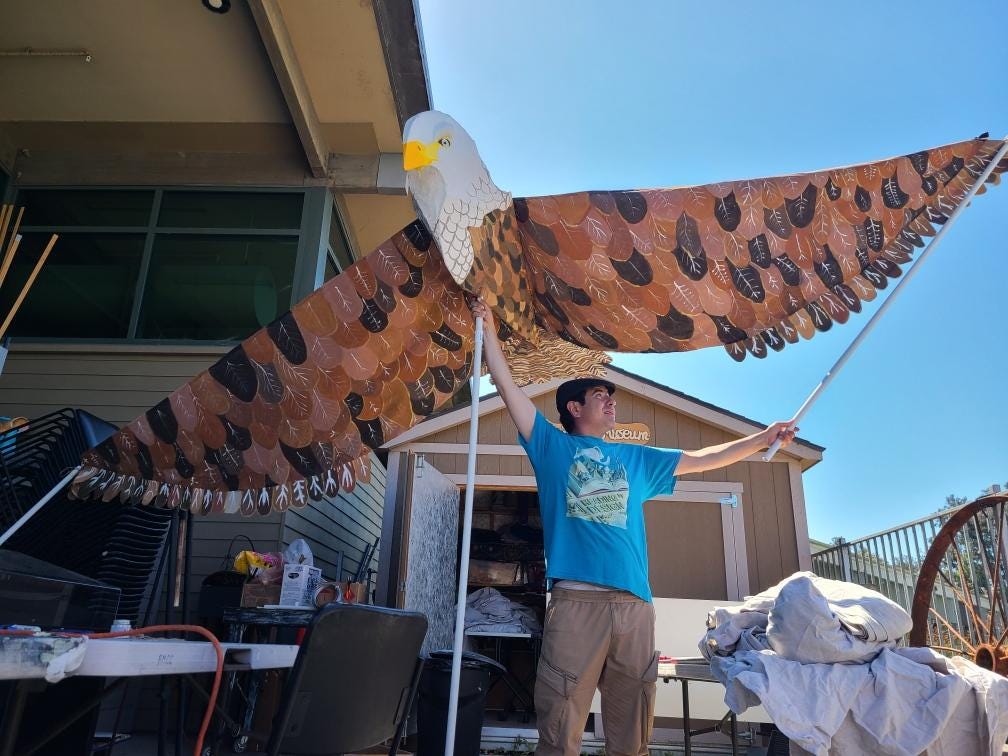Common Ground: Building Bridges
I got to know Bri Dennison when she started helping me figure out how to post Common Ground, my Substack contribution to the Iowa Writer’s Collaborative. She has many talents as an assistant, but I just discovered that column writing is one of them. If I’d been her English 101 teacher in college I’d have suggested she find a way to make writing a part of her career path. She grew up in Dewitt, Iowa and graduated from DePauw University. She worked as a staffer for Congressman Dave Loebsack before moving to California with her husband, who is also an Iowan. Now she works for her sister-in-law Jen Speers who started a small business, Moonwake Collaborative, to support small businesses with admin systems and their online presence. After hearing the story of her summer volunteer experience, I suggested Bri write a guest column this week. After all, I suggested, “I’m a teacher and you’re young enough to have been one of my students so how about writing the obligatory “How I spent my summer vacation” essay. My favorite part is Pat Nixon demanding that someone cut the barbed wire fence between Mexico and California. Or maybe it’s the condor and the eagle legend or the photo of the Eagle puppet? Here it is. You decide.
Fred Rogers once said, “When I was a boy and I would see scary things in the news, my mother would say to me, ‘Look for the helpers. You will always find people who are helping.’” That quote has been on my mind a lot lately. In a world where the news often feels overwhelming, looking for the helpers reminds me that small acts of service still matter. For me, Sierra Service Project (SSP) is where I have always found the helpers—and where I’ve learned to be one.
Sierra Service Project
Sierra Service Project is a sister organization to the Appalachian Service Project, established by Rev. Tex Evans in 1971. Initially, SSP operated in Indigenous communities on Native American Reservations, largely providing carpentry projects to homeowners at no cost to them. The young adult staff on site all summer lead groups of volunteers each week to complete these projects. Typical projects include wheelchair ramps, awnings, roofing, porches, steps, drywall, and painting. Over the years, SSP expanded to large, urban areas such as Los Angeles, Stockton, and San Diego, where the projects often focus on community gardens, invasive species removal, and food recovery. Wherever SSP goes, the helpers show up.
I’ve been part of SSP since 2002, when I was entering my freshman year of high school. Over the years I’ve been a youth volunteer, an adult counselor, and served four silly summers on staff in college. I grew up in the Methodist Church, where service was central to youth ministry. As a teenager, it was easy to be enthusiastic about SSP—you got a week away from your parents, goofy activities with friends, and the satisfaction of doing work that mattered. As an adult, I go now to serve the community and support the youth, but I always forget how much I receive in return. This year felt especially poignant, being just a few miles from the U.S.–Mexico border in National City, California.
Social Sweaters
The week I attended was an intergenerational one, with volunteers ranging from middle schoolers to young adults. My team skewed younger, with middle schoolers through just-entering-high-school students. Middle schoolers get a bad rap, but I’ve always had a soft spot for them. Yes, their attention spans are shorter, but they often haven’t learned to put on what SSP calls their “cool jackets”—the attitude of being too cool to participate, too cool to be silly, too cool to have fun. At SSP, instead of “cool jackets,” we invite everyone to wear “Social Sweaters,” a chance to let go, be goofy, and welcome everyone into the fold. Middle schoolers often haven’t even realized they’re supposed to act too cool, resulting in more authenticity from the start.
Our work team rotated through several projects instead of focusing on one project. In a traditional SSP week, volunteers often build relationships with the homeowner whose house they’re repairing. For us, the “homeowner” became the entire community of National City. We painted city park bleachers that was funded by a grant that covered supplies but not labor. We pulled invasive species from the local beach. We were scheduled to go to The Tijuana River National Estuarine Research Reserve later in the week to help with gardening and clearing old stumps and debris. The ninth-grade boys were particularly excited by the prospect of handsaws.
Chicano Park
We also visited Chicano Park, where a local volunteer shared the history behind the vibrant murals there. The park’s story is one of loss, resilience, and community action. Once a thriving middle-class neighborhood, the area was disrupted first by the Navy’s expansion during WWII, cutting off beach access for the community, then further fractured when I-5 cut through the neighborhood. A promised park never came; instead, the land was slated for a California Highway Patrol station. The community organized, forming a human chain for 12 days to stop construction. They won, and the park today tells their story through towering murals—visual testaments to the power of people showing up for one another.
Like any week with many moving parts, our plans shifted. Instead of the The Tijuana River National Estuarine Research Reserve, we joined another project—helping to make protest signs and a giant eagle puppet for the 54th Anniversary of Friendship Park. Friendship Park, or El Parque de la Amistad, sits directly on the U.S.–Mexico border. It’s the only place where people from both countries could once meet without crossing. For many legal residents unable to travel back to Mexico, it was a lifeline—grandparents meeting babies through a fence, families reconnecting even if only for minutes. Established in 1971 after Pat Nixon asked a strand of barbed wire be cut to greet people on the Mexican side, the park has since been marked by rope, chain link, and now the U.S.–Mexico border wall. It closed in 2020 on the U.S. side and has not reopened.
Healing from Colonization
At the International Day of Friendship, our eagle puppet joined a condor puppet from the Mexican side. Together they symbolized an old folktale: that when the eagle and the condor fly together again, healing from colonization will begin.
Each summer, SSP organizes its work around a theme. This year it was Building Bridges—and the theme couldn’t have been more fitting. On the Day of Friendship, there was a bridge of yellow roses and flowers stretching across the symbolic divide. “What this bridge represents: one side is the U.S. while the other side is Mexico,” explained co-organizer Blanca Estela Salas. “We welcome them with open arms. These roses symbolize friendship and peace.”
That week in National City, I found the helpers; in middle schoolers painting bleachers, in neighbors preserving Chicano Park, in families still fighting for access to Friendship Park, and in SSP volunteers building literal and symbolic bridges. Often at SSP, the focus is on the tangible work: a new ramp, a safe roof, a garden planted. But sometimes the work is about showing up for a community that has been intentionally targeted, standing alongside them, and saying: These are my neighbors. I will love them as myself.
Mr. Rogers was right: when the news feels overwhelming, look for the helpers. A week of service can’t reopen Friendship Park or undo generations of displacement. But it can spark something small—a sense of connection, a habit of paying attention, a readiness to stand alongside our neighbors. And maybe that’s how we begin building the world we want to see.






Thanks for sharing this. It was so interesting, and a single sentence on something I didn't know gave me a whole new view of Pat Nixon. And yes, keep writing!
Bri,
Christie is right. Keep writing.